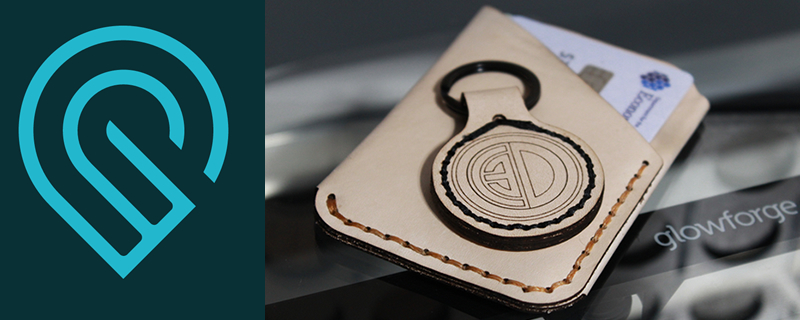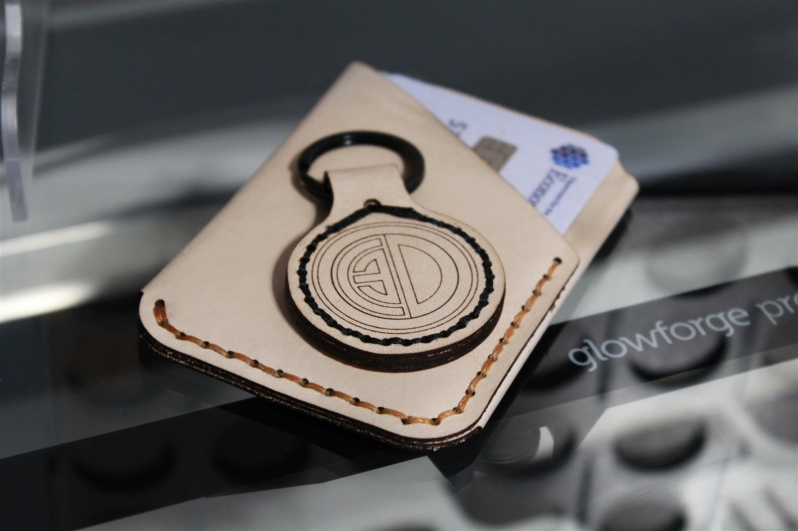Glowforge Pro 3D Laser Printer Review
While file types does the Glowforge Support?Â
As mentioned before, all Glowforge models support JPG, PNG, SVG and PDF files. For JPG and PNG files (raster files), the Glowforge can engrave raster images onto materials, and for SVG and PDF files (vector files), cuts, scores and engraves are possible.
To create your own designs for a Glowforge product, you will need to be able to design and create these files using image editors and similar software suites. Glowforge users often recommend software packages like Adobe Illustrator, Inkscape, and Silhouette Studio for this purpose, as they allow users to directly create SVG cut files.
Making a Custom OC3D LED Light Diffuser
Like many people, I have an old LED base light in storage, and using the Glowforge I thought that I could create a custom acrylic light plate to resurrect this long-shelved RGB lighting product. After measuring the base of this RGB light, I designed a circular plate that could fit into it and created an OC3D logo that could then be engraved onto it. This process didn’t take that long, as all I needed what a Black/White OC3D logo and an outline that I needed to cut into an acrylic sheet.
Admittedly, this is a simple design, but using these base lights you can create acrylic lighting panels that can display messages, logos, birthday wishes or anything you want. This is just a simple design that we used as a starter project, re-acquainting ourselves with the tools we need to create more complex projects.
Leatherworking – Making a Wallet and a custom key ring
With the Glowforge shipping with some leather, it would be wrong of us to review it without doing a bit of leatherworking.
With these being starter projects, we will admit that our designs are simple. The credit card holder is a design that we found online, and the keyring is a custom creation.
All we needed to do was create appropriate SVG files, upload these files to the Glowforge’s web app and get them ready to cut. The keyring uses two folded over pieces of leather, making the final piece four layers thick. It is held together with stitching and some glue, and overall I am very satisfied with the results.
I would never have ever considered working with leather, but the Glowforge has made it almost too easy.
Making a Custom Four-In-A-Row Game
Our first two projects were starter projects, designs that I used to learn how to create SVG files that are Glowforge compatible. I wanted these skills to tackle a more complicated project, a board game.
While a 4-in-a-row game is a simple enough concept, it requires a lot of laser cut parts and decent part tolerances to create. The cut files used to create the below product were designed by me, taking a few short hours to create. The front and back of the board were made using maple plywood, with all other connecting pieces being made from clear acrylic. The counters are made using Basswood hardwood, and cherry plywood.
I could have bought a mass-produced copy of this kind of game online, but the Glowforge Pro has allowed me to create my own. If nothing else, this should showcase the Glowforge’s ability to enable creative talents. Like the leather items above, I would never have considered making this without the Glowforge.
Contents
–Â Proofgrade Materials – What are they, and are they worth it?
–Â Glowforge Air Filter Add-on – Is it worth it?
– Using the Glowforge Pro – Early Creations
–Â More Makes – Engraving and Experimentation
–Â Creating More with the Glowforge Pro (Custom Designs) (This Page)
–Â Conclusion – Is the Glowforge Pro Worth it?
Â






